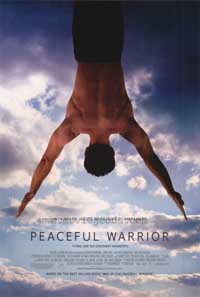Imagine there?s no countries
It isn?t hard to do
Nothing to kill or die for
And no religion too
Imagine all the people
Living life in peace…
“And no religion too” has a been a difficult part of the song for me until recently. One of the key points is understanding what is meant by “religion.”
It’s often pointed out that “religion” comes from the Latin for “to bind again.” In a positive sense, this is _repair_, binding us together again, making us whole, building community, creating moral underpinnings, providing purpose and hope, establishing a base upon which to reach out to others, and at its very best, providing an entrance through which one can experience the numinous.
In a negative sense, though, binding is bondage, creating vast arrays of mental garbage that prevents many _from_ discovering God, themselves, and full human life. It also implies separation.
Imagine (no pun intended) a stick bound in a bundle with other sticks. They become a group, a unit. Yet, in being bound together, they are also bound away from everything else. A single stick loses its fractured “identity” as a simple stick, and becomes a part of something larger than its small broken self, yet smaller that the whole it is inherently part of (all the wood on Earth).
This, in miniature, reflects the deficiency of “identity” given by the rebinding of religion. It’s excellent as far as lifting the individual to the next higher step, yet the very bonds that lifted him up to that point might inhibit him from being able to reach the next step beyond that. If so, he may identify with the religion, and create an identity from it. Our religious identities are as flimsy as our national identities, though they seem not to be at first. After all, I can have an experience of God, but does anyone have an experience of “country?” I don’t think so.
At times in my life, I have imagined (pun intended) that I was a Baptist, a Methodist, a Charismatic, a Lutheran, a Messianic gentile, a member of the Christian Church Disciples of Christ, or a Catholic. Since my first experience of Christ, I’ve imagined I was “a Christian.” Yet Jesus only asked people to follow him, not to “become Christians!”
The truth is I am a human being, and as far as I can tell, even that apparent condition is only in effect until I die. I am spirit, or consciousness, or life. In Judeo-Christian terms, I’m made in “the image of God,” imago Dei. Other religions have other terms. Whatever it’s called (and it’s important to not attach to any particular language), that is the only thing that is unchangeable.
Yet the identification with a religion has nothing to do with the knowledge of God. The former gives the language and interpretation, the mental filling, that comes before and after those sacred moments of knowing. And the labels are purely products of the mind. No doctor has ever identified a Muslim headache or a Catholic T-cell. The Baptist gene remains stubbornly beyond discovery, and the Daoist dermis seems to be a myth! Yet there’s no shortage of people to tell you that you “are” Shi’a or Anglican or Jodo Shin Buddhist, or whatever.
Imagine there’s no religion…
Since the experience I had in January, I can. It’s much simpler than religion. Simpler than any concept of God or nirvana. Simpler than a single word It’s just:
.
Posts in this series: pt. 1, pt. 2, pt. 3, interlude, conclusion.




 A large number of people, however, are not yet able to earnestly question what they’ve been taught about “good” and “evil.” That in itself isn’t a problem. But those unquestioned presuppositions can become the source of great suffering. Large parts of the Christian, Muslim and Jewish world are engaged in open warfare at the time of this post. It’s fair to say that every entity involved in the fighting views itself as “good,” and their enemy as “evil.”
A large number of people, however, are not yet able to earnestly question what they’ve been taught about “good” and “evil.” That in itself isn’t a problem. But those unquestioned presuppositions can become the source of great suffering. Large parts of the Christian, Muslim and Jewish world are engaged in open warfare at the time of this post. It’s fair to say that every entity involved in the fighting views itself as “good,” and their enemy as “evil.”